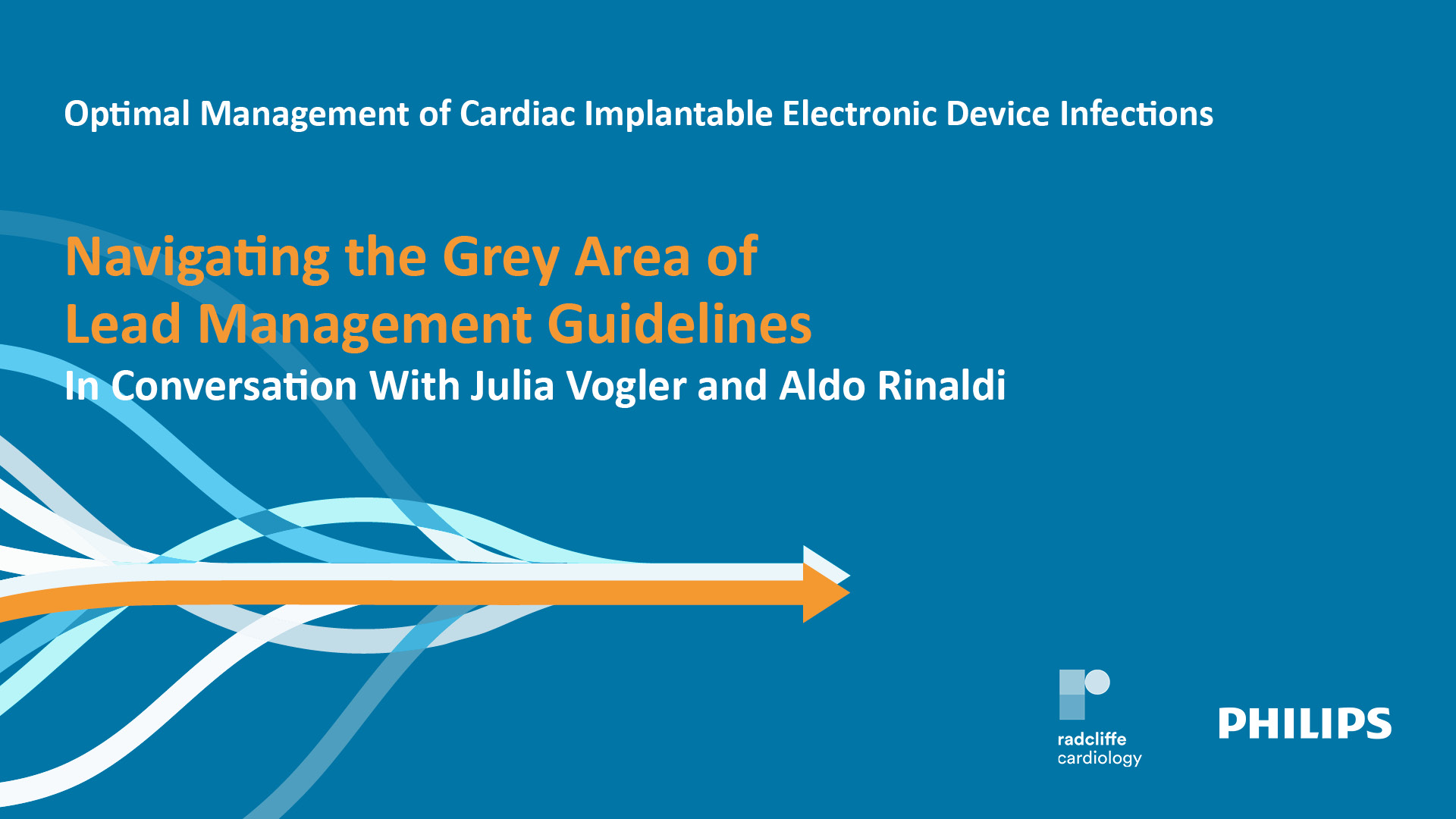Optimal Management of Cardiac Implantable Electronic Device Infections
Published: 21 February 2023
-
Views:
 8948
8948
-
Likes:
 7
7
-
Views:
 8948
8948
-
Likes:
 7
7
-
 13m 16sPart 1 What is a CIED? In Conversation With Archie Rao and Angelo Auricchio Angelo Auricchio, Archana Rao
13m 16sPart 1 What is a CIED? In Conversation With Archie Rao and Angelo Auricchio Angelo Auricchio, Archana Rao
-
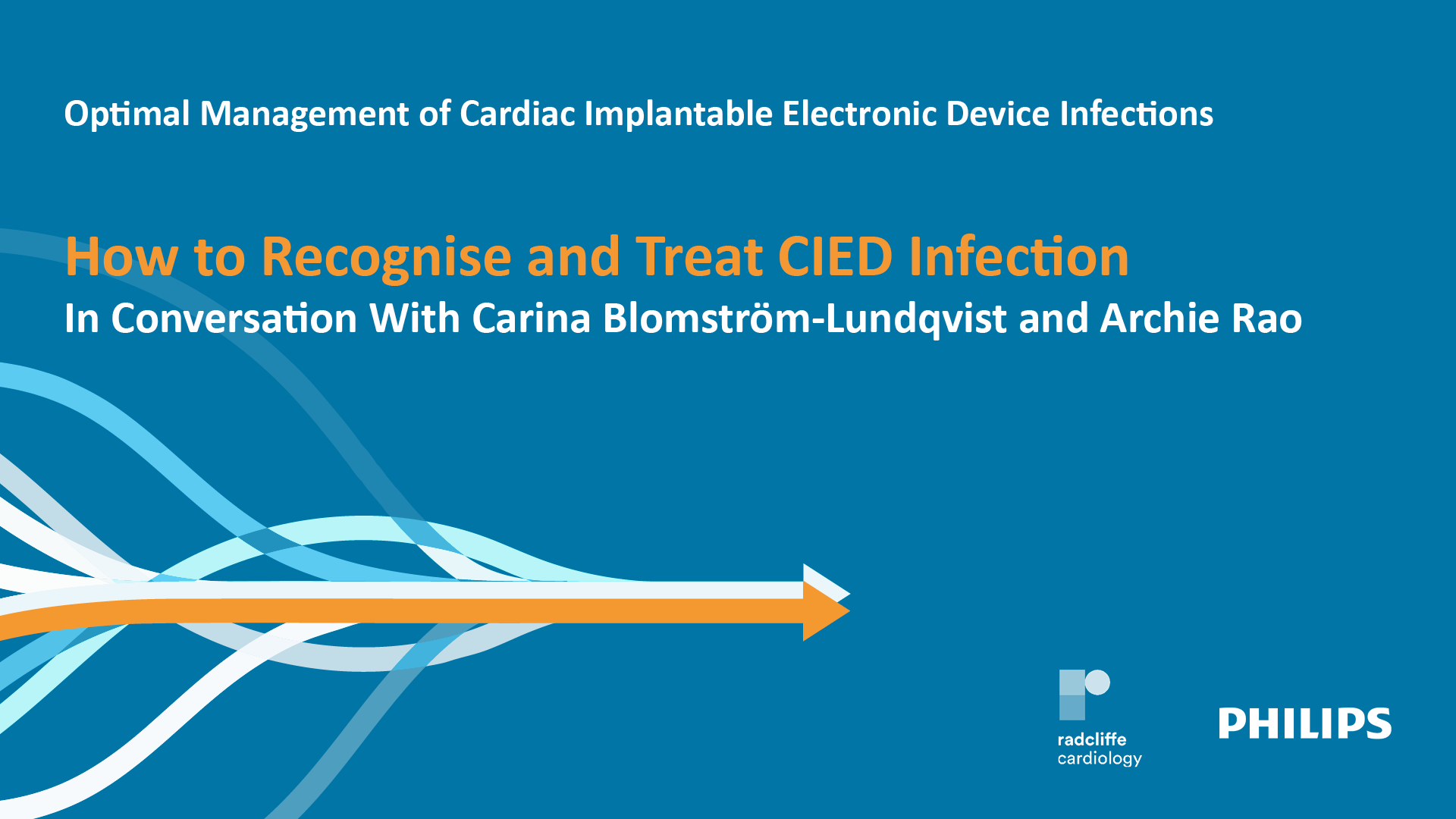 9m 50sPart 2 How to Recognise and Treat CIED Infection: In Conversation With Carina Blomström-Lundqvist and Archie Rao Carina Blomström-Lundqvist, Archana Rao
9m 50sPart 2 How to Recognise and Treat CIED Infection: In Conversation With Carina Blomström-Lundqvist and Archie Rao Carina Blomström-Lundqvist, Archana Rao
-
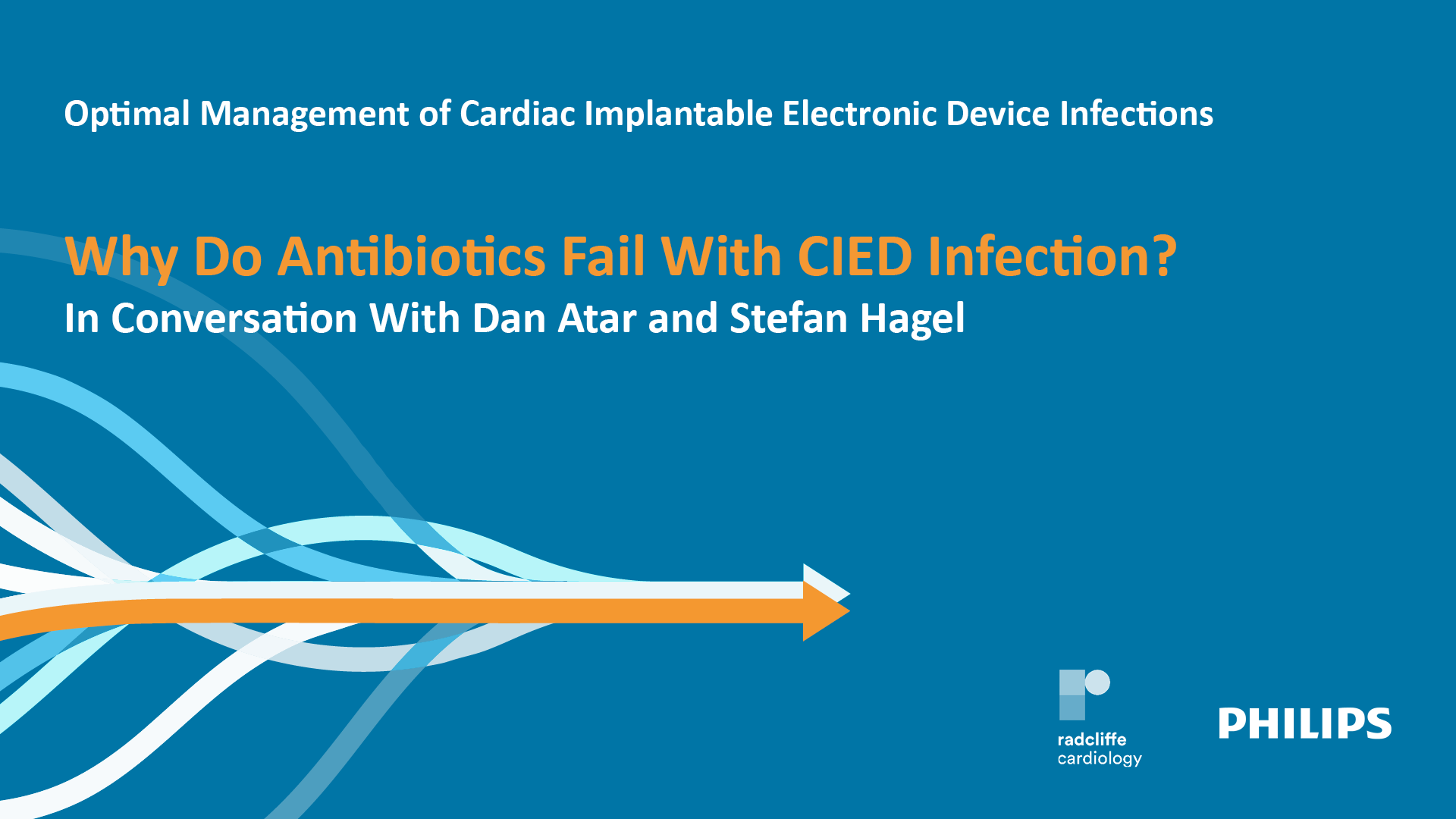 9m 6sPart 3 Why Do Antibiotics Fail With CIED Infection? In Conversation With Dan Atar and Stefan Hagel Dan Atar, Stefan Hagel
9m 6sPart 3 Why Do Antibiotics Fail With CIED Infection? In Conversation With Dan Atar and Stefan Hagel Dan Atar, Stefan Hagel
-
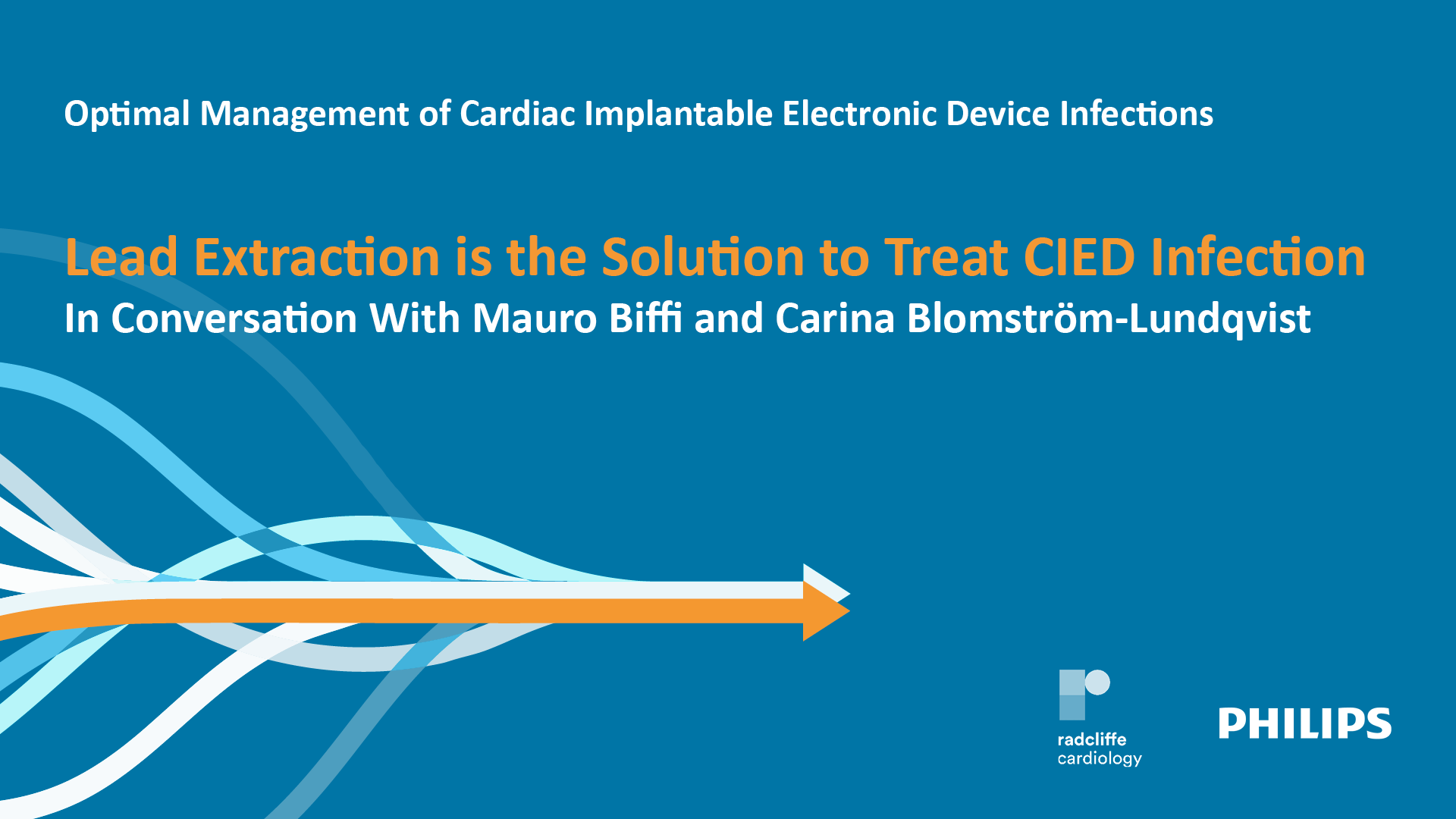 11m 22sPart 4 Lead Extraction is the Solution to Treat CIED Infection: In Conversation With Mauro Biffi and Carina Blomström-Lundqvist Mauro Biffi, Carina Blomström-Lundqvist
11m 22sPart 4 Lead Extraction is the Solution to Treat CIED Infection: In Conversation With Mauro Biffi and Carina Blomström-Lundqvist Mauro Biffi, Carina Blomström-Lundqvist
-
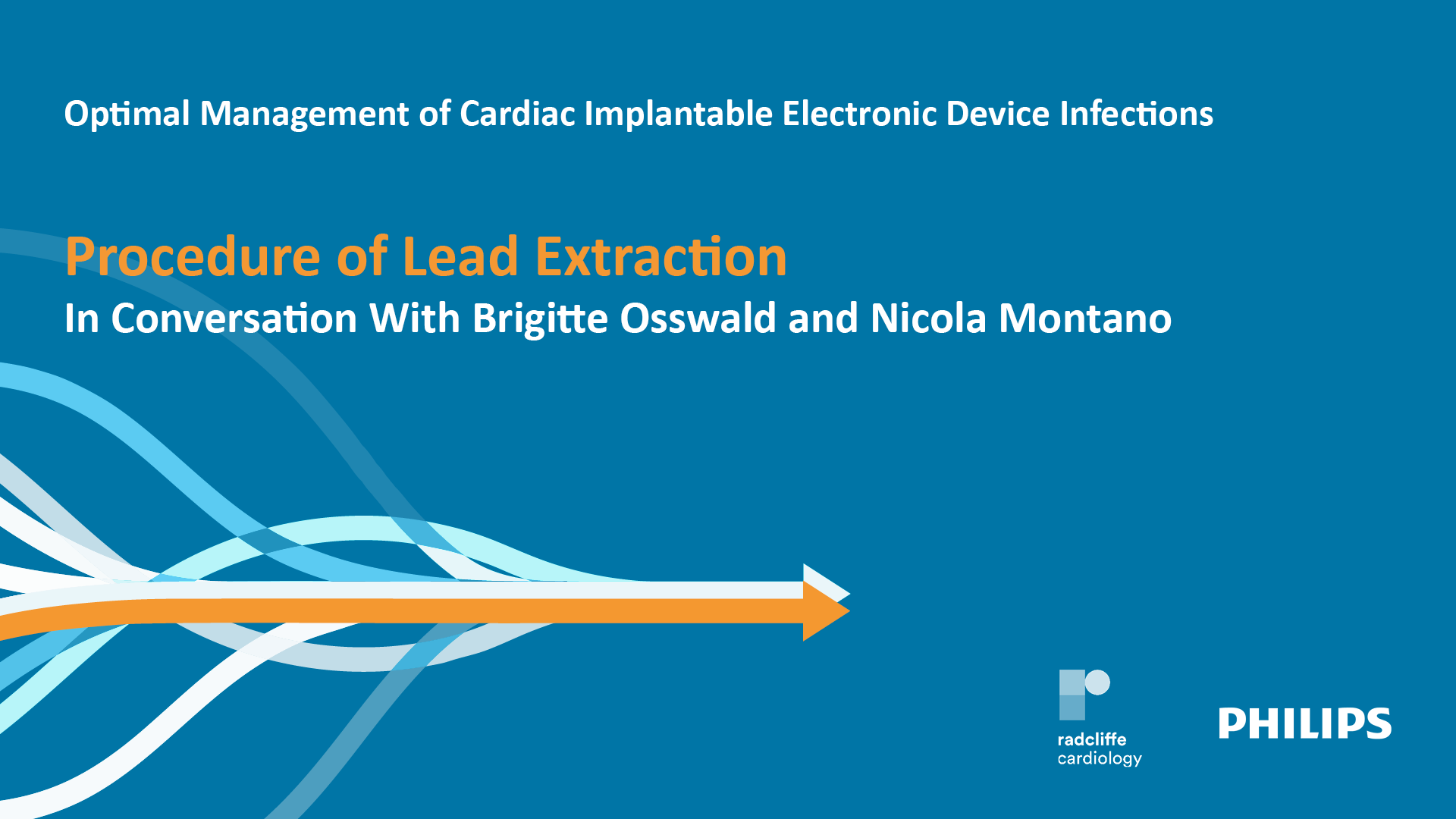 9m 25sPart 5 Procedure of Lead Extraction: In Conversation With Brigitte Osswald and Nicola Montano Brigitte Osswald , Nicola Montano
9m 25sPart 5 Procedure of Lead Extraction: In Conversation With Brigitte Osswald and Nicola Montano Brigitte Osswald , Nicola Montano
-
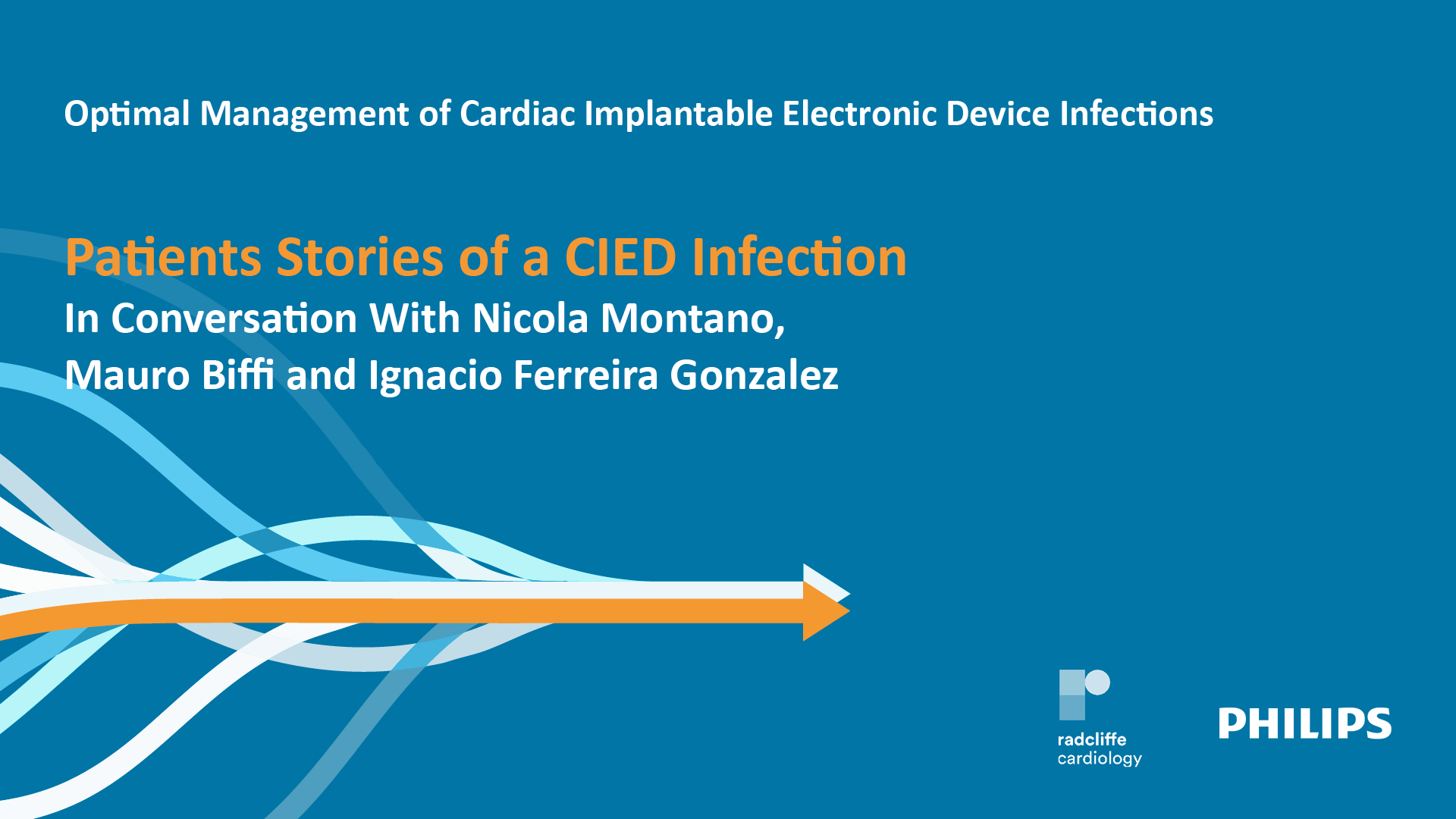 17m 27sPart 6 Patients Stories of a CIED Infection: In Conversation With Nicola Montano, Mauro Biffi and Ignacio Ferreira Gonzalez Mauro Biffi, Ignacio Ferreira Gonzalez, Nicola Montano
17m 27sPart 6 Patients Stories of a CIED Infection: In Conversation With Nicola Montano, Mauro Biffi and Ignacio Ferreira Gonzalez Mauro Biffi, Ignacio Ferreira Gonzalez, Nicola Montano
-
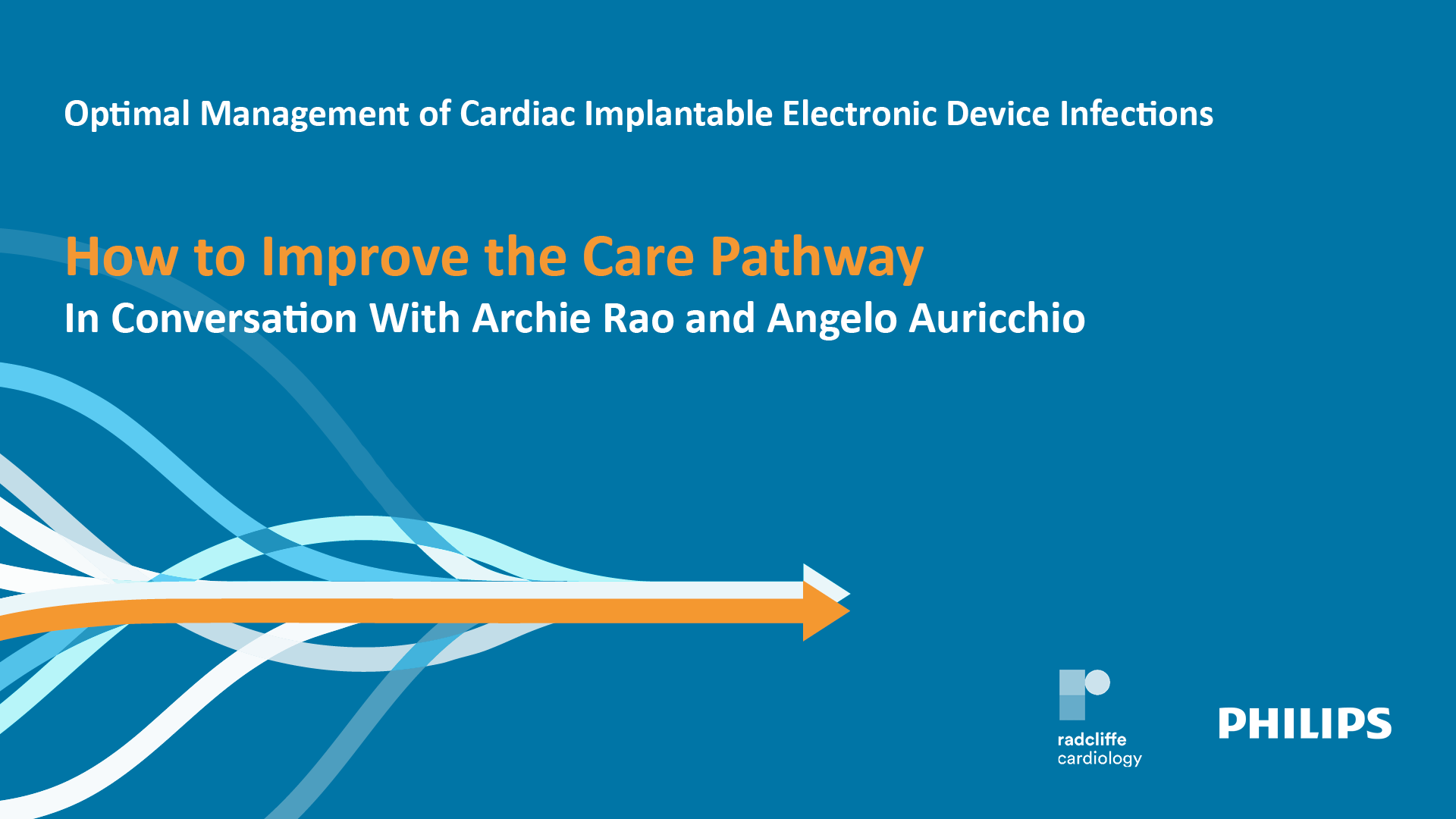 15m 24sPart 7 How to Improve the Care Pathway: In Conversation With Archie Rao and Angelo Auricchio Angelo Auricchio, Archana Rao
15m 24sPart 7 How to Improve the Care Pathway: In Conversation With Archie Rao and Angelo Auricchio Angelo Auricchio, Archana Rao
-
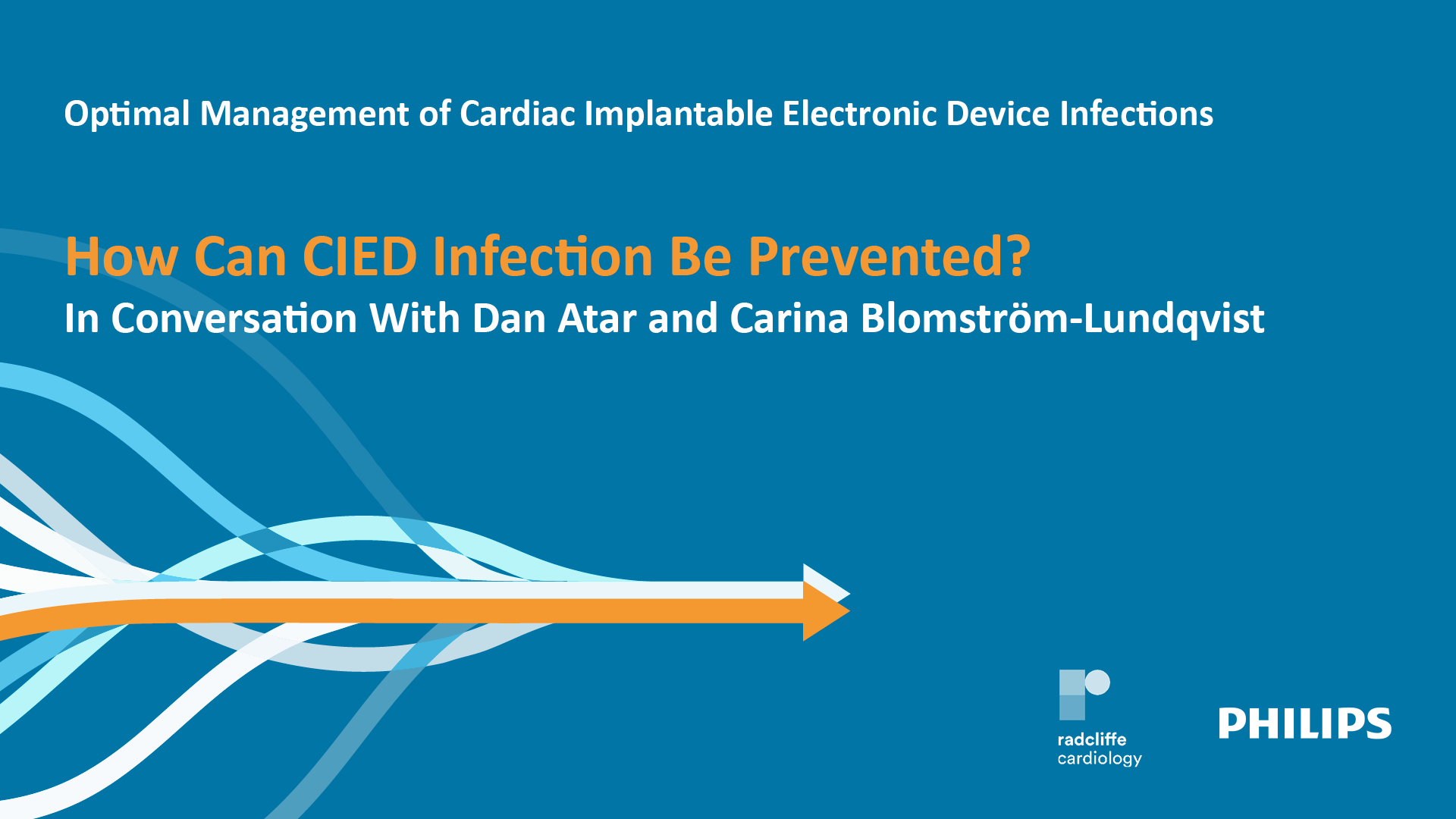 8m 27sPart 8 How Can CIED Infection Be Prevented? In Conversation With Dan Atar and Carina Blomström-Lundqvist Dan Atar, Carina Blomström-Lundqvist
8m 27sPart 8 How Can CIED Infection Be Prevented? In Conversation With Dan Atar and Carina Blomström-Lundqvist Dan Atar, Carina Blomström-Lundqvist
-
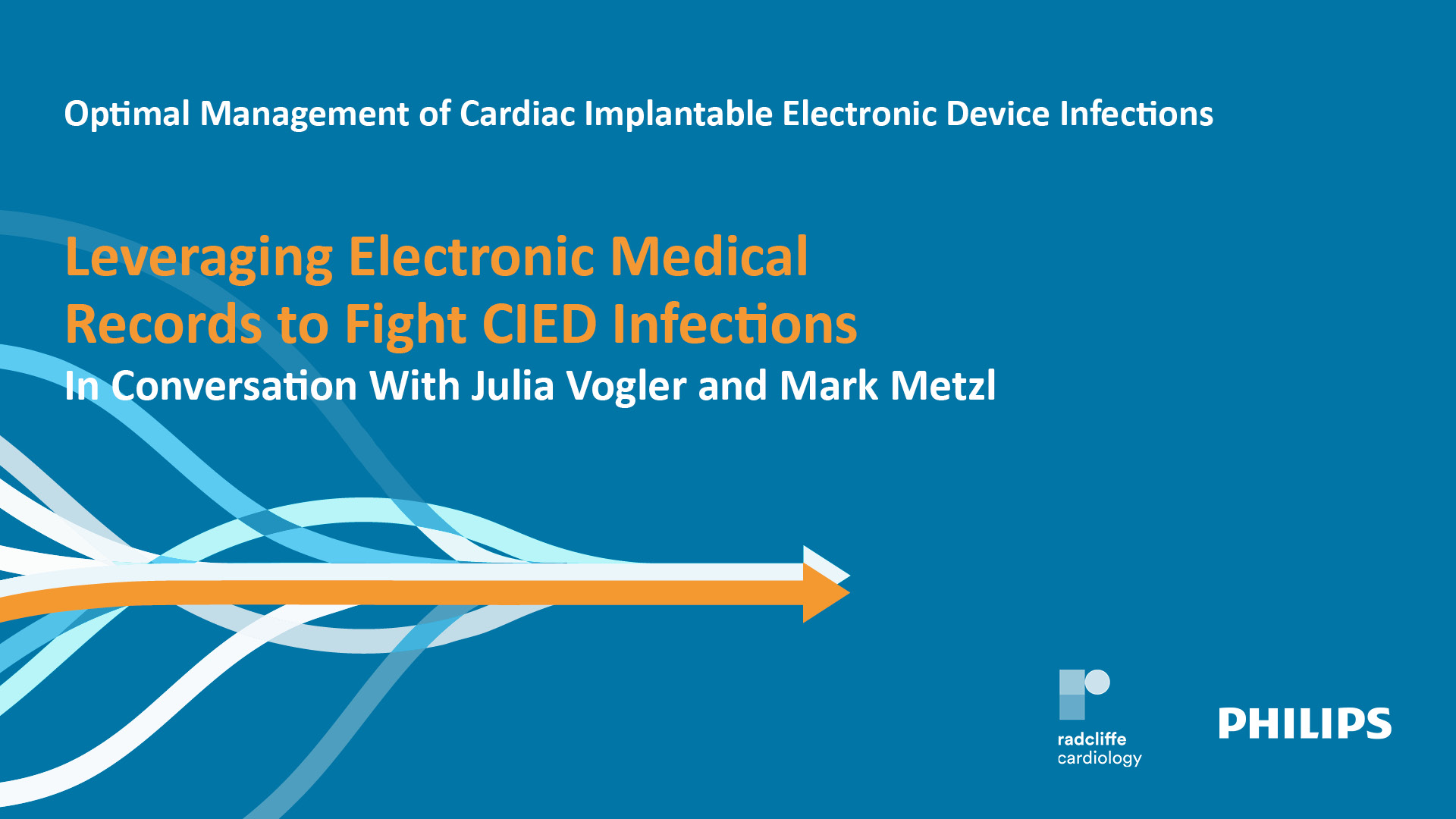 22m 4sPart 9 Leveraging Electronic Medical Records to Fight CIED Infections: In Conversation With Julia Vogler and Mark Metzl Julia Vogler, Mark Metzl
22m 4sPart 9 Leveraging Electronic Medical Records to Fight CIED Infections: In Conversation With Julia Vogler and Mark Metzl Julia Vogler, Mark Metzl
Overview
Although rare, the occurrence of a pacemaker or a defibrillator infection is an important complication which can and must be treated fast and effectively. On a weekly basis the story unfolds: how to best manage cardiac implantable electronic device (CIED) patients when their device becomes infected and gather insights from physicians with different specialties in an interactive setting.
Click here to listen to the podcast versions.

Learning Objectives:
- What CIEDs are, what benefits they bring to a patient and potential complications
- How to manage a CIED patient and which signs to look out for
- Why antibiotics are ineffective against CIED infection
- Which steps to take once a CIED infection is suspected
- The procedure of lead extraction and its safety profile
- The emotional journey for patients if referral is delayed
- How to improve the patient care pathway
- How one can help prevent CIED infection
Target Audience:
- Physicians who manage patients with a CIED
- Key departments include cardiology, infectiology, renal, emergency department and care of elderly
More from this programme
Part 1
Episode 1: What is a CIED?
Patients with a cardiac implantable electronic device (CIED), like a pacemaker or a defibrillator, can be of all ages and have different types of implants. You have probably encountered at least one of these in your everyday practice. In this episode, Angelo Auricchio and Archie Rao, both specialists in this area, will discuss types of CIEDs and what they do. They will highlight potential complications with focus on infection. CIED infection is frequently under-recognised and potentially life-threatening. The good news is, it is treatable.
Part 2
Episode 2: How to Recognise and Treat CIED Infection
Although rare, infection of a pacemaker or a defibrillator is an important complication which must and can be treated effectively. Cardiac electronic implantable device (CIED) infection is a Class I indication for extraction but recent data has demonstrated that less than 2 in 10 patients receive appropriate treatment. Prof Carina Blomström-Lundqvist, Swedish Professor of Cardiology, and Dr Archie Rao, British consultant cardiologist, are both passionate about this topic. Carina Blomström-Lundqvist is the lead author of the European CIED infection guidelines and Archie Rao has led a gap analysis into the knowledge of CIED infection and treatment. They explain how to recognise a patient at risk and what to do to provide best outcomes for your patient.
Part 3
Episode 3: Why Do Antibiotics Fail With CIED Infection?
Although rare, cardiac implantable electronic device (CIED) infections may occur at any timepoint in the lifecycle. It is important to remain alert and recognise signs early. Traditionally, antibiotics alone are used to treat infection. But for CIED infections, when treated with antibiotics only, the relapse rate varies between 50 and 100 percent. But why is that? Dan Atar, Editor-in-Chief of the scientific journal ‘Cardiology’, and infectiologist Stefan Hagel, not only challenge the traditional point of view but tear down the decades of belief which surround it. Why are antibiotics not doing the job? What are the consequences? What is the solution? Why are infections sometimes overlooked and what is the action to change that in your practice?
Part 4
Episode 4: Lead Extraction is the Solution to Treat CIED Infection
Infection of a cardiac electronic implantable device (CIED) is a rare, but serious complication. We now know that, because of the appearance of biofilm on implants, these infections cannot be treated by antibiotics alone. As such, Worldwide Cardiac Society guidelines recommend complete system removal of all hardware, including the leads, when an infection is present. Although the guidelines are clear, too many patients continue to not get the appropriate treatment. Why is that? Mauro Biffi and Carina Blomström-Lundqvist, both experts in the field of lead extraction, see a lot of patients fall through the cracks. They discuss why and what the consequences are of not extracting in time but also: what is the recommended care pathway to improve the outcomes.
Part 5
Episode 5: Procedure of Lead Extraction
Infection of a cardiac electronic implantable device (CIED) is a rare, but serious, complication. When this happens, the removal of the entire system, generator and leads, is the only correct way to treat the infection. What happens during a procedure with lead extraction? Brigitte Osswald, an expert in the field who has performed more than 3,500 lead extraction procedures, talks to Nicola Montano, a physician in internal medicine, about the fundamentals of the procedure and explains why and how this is lifesaving for her patients.
Part 6
Episode 6: Patients Stories of a CIED Infection
When the pacemaker or the defibrillator of a patient becomes infected, and if it's not immediately treated correctly, it can be a very emotional journey for the patient. Prof Biffi and Prof Ferreira have treated many CIED infection patients and often see cases where treatment was inappropriate or unnecessarily delayed. They share two touching patient stories with Prof Nicola Montano, physician in internal medicine. They discuss how these patients fell through the cracks of the diagnostic and therapeutic pathway and the devastating consequences for the patient.
Part 7
Episode 7: How to Improve the Care Pathway
An infection can have serious consequences for patients with a pacemaker or defibrillator when not treated appropriately. In this episode, Angelo Auricchio and Archie Rao explore which practical changes can be made to your clinical setting to improve these patients’ pathway.
Part 8
Episode 8: How Can CIED Infection Be Prevented?
Patients with a pacemaker or defibrillator have a risk of having a device-related infection. Discover in this episode which actions can be taken to reduce the risk for infection. From pre-procedure planning to post-operative care, Dan Atar, Editor-in-Chief of the scientific journal ‘Cardiology’, and Carina Blomström-Lundqvist, lead author on the international consensus document addressing this topic, will discuss preventative measures for CIED infection.”
Part 9
Episode 9: Leveraging Electronic Medical Records to Fight CIED Infections
Did you know that less than 2 in 10 CIED infection patients receive treatment according to guidelines? This gap in care can have significant consequences for patient outcomes. But what if there was a way to leverage Electronic Medical Records (EMRs) to automatically detect these patients and ensure timely and appropriate treatment? In this episode, discover how these alerts can help you to make an early CIED infection diagnosis and streamline your treatment process. Additionally, learn valuable tips and tricks on how to successfully implement EMR alerts in your hospital.
Part 10
Episode 10: Navigating the Grey Area of Lead Management Guidelines
This episode delves into why lead management can be challenging and highlights the importance of collaboration between referral and extraction centres. Learn about the long-term consequences of abandoning leads, the need for a holistic approach and strategies for overcoming barriers for early referral.
Faculty Biographies

Aldo Rinaldi
Electrophysiologist
Prof Aldo Rinaldi is an Electrophysiologist at Guy's and St Thomas' NHS Trust Hospitals, London, UK.
He trained at King’s College Hospital becoming a member of the Royal College of Physicians in 1993 and a fellow in 2006. He undertook his training in cardiology at Guy’s & St Thomas’ Hospitals with dual accreditation in cardiology and general medicine.
Prof Rinaldi has a special interest in cardiac resynchronisation therapy for heart failure, laser lead extraction and treatment of atrial fibrillation. He leads the electrophysiology service at St Thomas’ Hospital and the Cardiac Device Research Programme. He has published over 500 peer-reviewed papers and book chapters.






